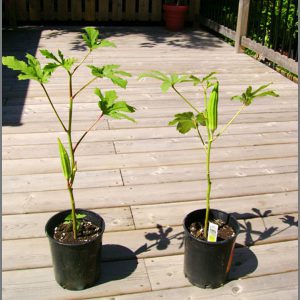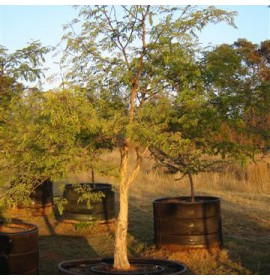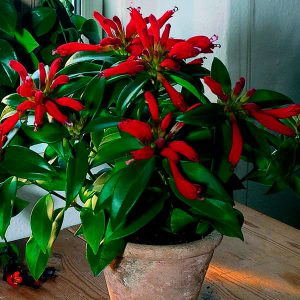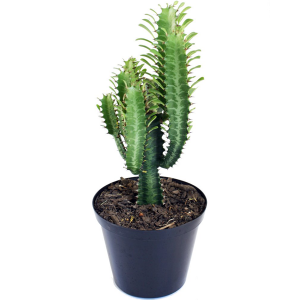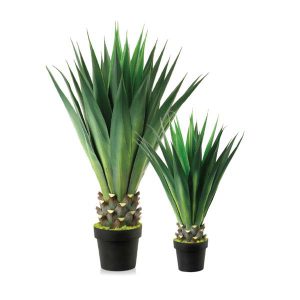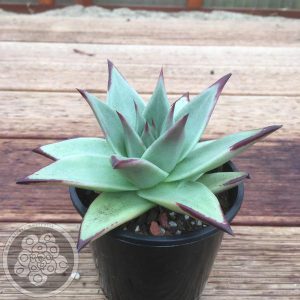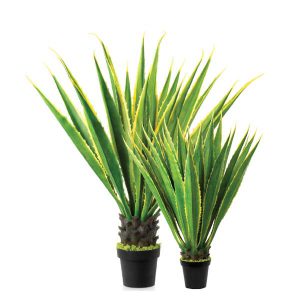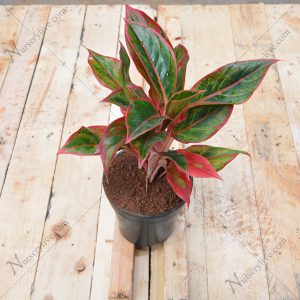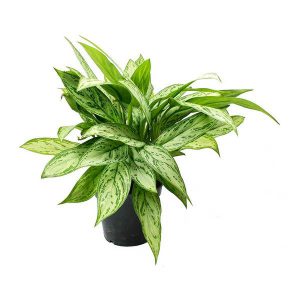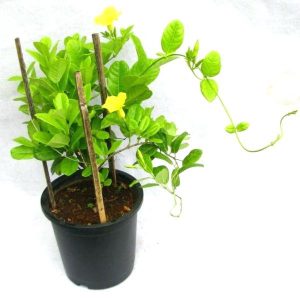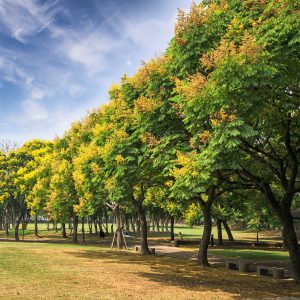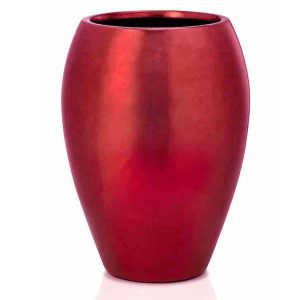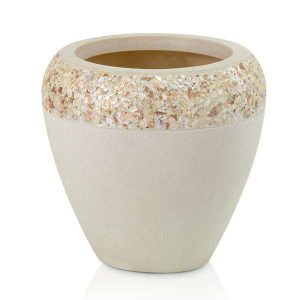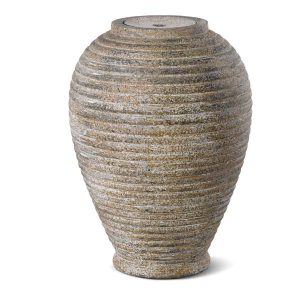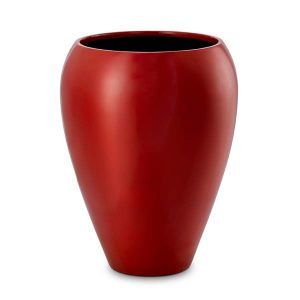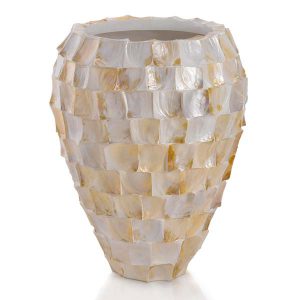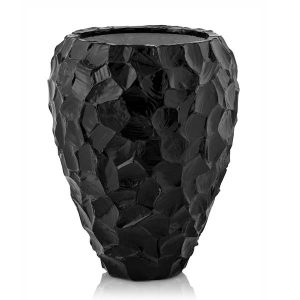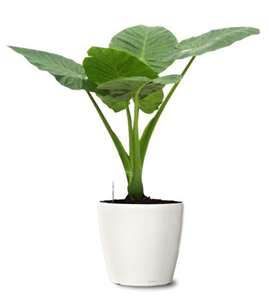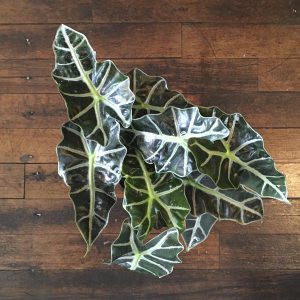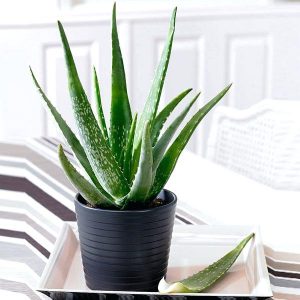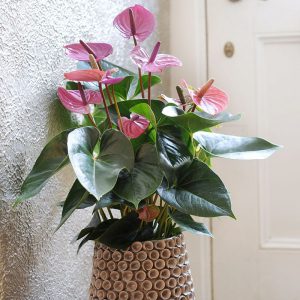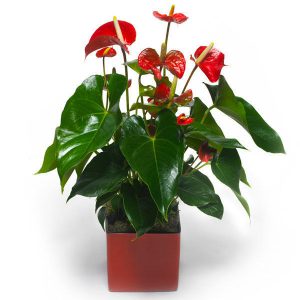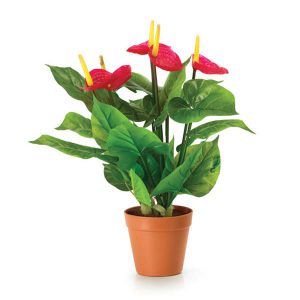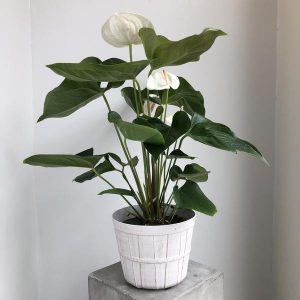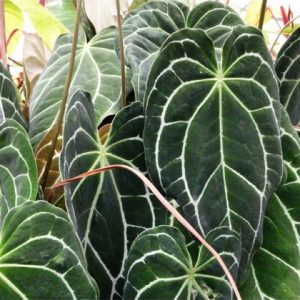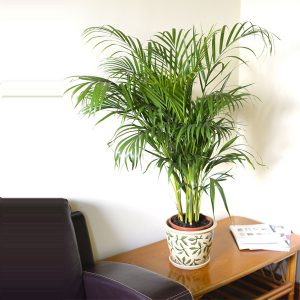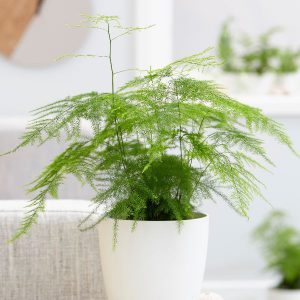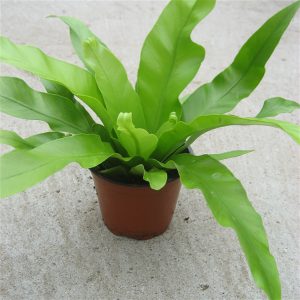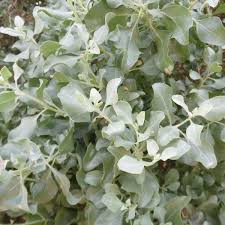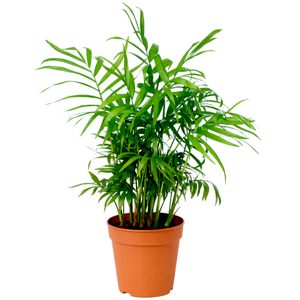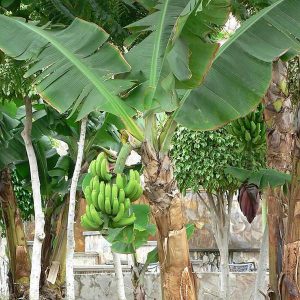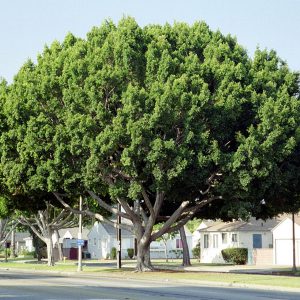Shop
Abelmoschus Esculem
Okra is a cultigen (a plant that has been altered by humans through a process of selective breeding). The exact origin of okra is unknown, but it is thought to have come from Africa, where it has been grown as a crop for centuries. Evidence suggests it was grown in Egypt as long ago as 2,000 BC. Today it is widely cultivated for its edible green fruits, which are harvested when immature (after 3-5 days of development), and are infamous for their slimy mucilage.
AED 0.00Read more
Acacia arabica
Acacia arabica Acacia arabica is a slow growing, long lived tree usually growing 2.5-7 m tall, but occasionally reaching up to 20
AED 100.00Add to cart
Aeschynanthus Radicans
Keep the room temperature between 65 and 70 degrees Fahrenheit during the spring, summer, and fall. As well, maintain a room humidity of between 25 and 49 percent.
- In the winter, keep the room temperature closer to 65 °F (18 °C) to encourage the plant to produce new flower buds.
- Do not hang the plant near a heating or air conditioning vent or near a doorway where it will be exposed to cold drafts in the winter.
- To make aged water, simply fill an empty milk jug or watering can a few days before the lipstick plant needs to be watered. Then fill the container again right away after watering the plant. This way, you will always have aged water ready for the plant.
- Allow the top 1 to 2 inches of potting mix to dry before watering in the winter. Keeping the lipstick plant a little dryer during the winter will result in more profuse blooming in the spring and summer.
AED 100.00Read more
African milk tree cactus
african milk tree cactus African Milk Tree (Euphorbia trigona) is a tall, rugged, easy-care plant with thorns. It should come as no
AED 50.00Read more
Agave blue glow
Agave is not a difficult plant to grow. They’re slow-growing and dramatic and will even thrive on a bit of neglect. If you’re the type of person who likes to fuss with houseplants and water a lot, Agave is probably not the plant for you. If, however, you’re the type of person who likes to set it and forget it, and you have a sunny window, Agave might the way to go. Be aware that some of the large varieties will eventually outgrow your room (unless you have a large greenhouse), and Agave can be aggressive. They have irritating sap and sometimes very sharp thorns that can cause injuries to small children and even pets.
In general, Agave do not need to be repotted every year. Most of the species commonly found in cultivation grow very slowly and will take a long time to outgrow their pot. It’s also best to handle your Agave as little as possible, since they do not like to be disturbed. When you do repot, refresh the spent soil with new potting mix and make sure the plant is firmly anchored in its pot
AED 0.00Read more
Agave Green ‘Real Feel’
Agave Green ‘Real Feel’
About 60 different plant families contain succulents. Succulent plants often store water in structures such as the leaves and/or stems resulting in parts that are more than normally thickened and fleshy. These parts by retaining water give the plants an advantage in arid climates. In families such as cactaceae, (cactus), Agavoideae, (Agave), and Crassulaceae (crassula), most plants are succulents. The habitats of these water preserving plants are often in areas with high temperatures and low rainfall.
AED 550.00Add to cart
Agave Red Edge
Agave plants need a spot in full sun to partial shade. The hotter the climate, the more shade they can handle.
Established plants need watering once every couple of weeks if at all. Deeply water, container grown Agave plants when the top inch or two of the soil dries completely.
AED 200.00Add to cart
Agave red edge (blue glow)
Smooth, blue-green leaves with yellow-edged, red margins form a single, symmetrical rosette. Each leaf tip bears a short red spine. A comely choice for sunny, low water gardens in warm coastal or humid Mediterranean-like climates. Handsome in dry desert gardens as well, provided some shade and supplemental water. Evergreen.
AED 0.00Read more
Agave Varigated ‘Real Feel’
Agave Varigated
About 60 different plant families contain succulents. Succulent plants often store water in structures such as the leaves and/or stems resulting in parts that are more than normally thickened and fleshy. These parts by retaining water give the plants an advantage in arid climates. In families such as cactaceae, (cactus), Agavoideae, (Agave), and Crassulaceae (crassula), most plants are succulents. The habitats of these water preserving plants are often in areas with high temperatures and low rainfall.
AED 550.00Add to cart
Aglaonema red
Light: The darker green varieties of aglaonema can grow in near shade, while the variegated varieties require brighter light. Do not expose any aglaonema to Direct Sun
Water: Water thoroughly in the summer and mist the plant often to raise the humidity. During the winter, reduce watering but do not let the plant dry out completely.
Temperature: These plants do not like cold drafts or temperatures below 65 F. Be sure to keep them away from drafty windows or vents and the warmer the spot you can find for them, the better.
AED 55.00Add to cart
Aglaonema silver queen
WATERING Aglaonema Silver Queen – If you place your Aglaonema Silver Queen in high light, you can allow the potting mix to dry down approximately 1/2 to 3/4 of the way before watering thoroughly. In a lower light situation, allow soil to dry between waterings.
TEMPERATURES for Aglaonema Silver Queen should be at a minimum of 60°F. It is easily damaged by cold drafts and temperatures. Be sure to keep away from cold spots and drafts and move away from cold window panes in the winter time.
PLACE Aglaonema Silver Queen in any shaded location. Full sun, especially through glass, will most likely burn the exposed leaves. This plant will survive in low light For a really nice looking plant, try to provide
AED 55.00Add to cart
Alamanda cathartica
alamanda cathartica Growth Form: A woody and evergreen vine. It can grow up to 6 m in height. Foliage: The leaves are borne in
AED 20.00Add to cart
Albizia lebbeck (rain tree)
The foliage is pale green when young and gray-green at maturity. Flowers are cream colored, hemispheric pom-poms. Seeds germinate well without scarification.
The tree is used as a folk remedy for many ailments. Another common use is as an avenue tree, and sometimes it is used to shade coffee and tea. Saponins and tannins in the bark can be used for making soap and in tanning, respectively. Bee keepers like the species for the light-colored honey its nectar provides, and the tree hosts the lac insect.
AED 0.00Read more
Alocasia california
Alocasia california. Alocasia. An Alocasia plant, native to Asia, is also called an Elephant Ear plant or African Mask plant because of their very large, glossy, heart-shaped leaves with wavy edges. These stunning, veined leaves come in red, bronze, blue-green, and purple.
AED 370.00Add to cart
Alocasia Polly Elephant Ear Plant
An Alocasia plant requires very bright indirect light but no direct sun.
Allow the top 2″- 3″ of soil to dry out before watering, and try to keep the soil evenly moist. Over-watering, wet leaves, and soggy soil makes an Alocasia plant susceptible to a variety of serious fungal infections. Check the soil frequently until you are sure of the plant’s watering needs. Alocasia plants require less water during the winter when it’s dormant.
Alocasia plants prefer warm temperatures between 60°-80.° These plants becomes dormant with prolonged exposure to temperatures below 60° and may drop all of their leaves. Be sure to keep an Alocasia plant away from air conditioners and cold drafts. During warm summer months, an Alocasia can produce a new leaf every week and each new leaf may be twice the size of the previous leaf.
AED 70.00Add to cart
Aloe vera Barbadensis Mille
As much as the Aloe Vera is used to hot and dry fields and often does not require water for a period of several months, regular watering is recommended. In dry periods, the Aloe Vera draws its moisture from the fleshy leaves. However, this inhibits its healthy and splendid growth. To prevent this, this Aloe species should always have a moist root ball during spring to late summer. You can test with your thumb, whether the plant needs water. If the surface can be pressed down a little bit, the soil is still moist inside. If the surface does not drop at least two to three centimeters under your thumb pressure, it should be watered
AED 45.00Add to cart
Amaryllis Red ‘Real Feel’
Amaryllis Red ‘Real Feel’
The flowering plants (angiosperms), are the most diverse group of land plants. The first flowering plants known to exist are from 160 million years ago. They diversified enormously during the Lower Cretaceous and became widespread around 120 million years ago. It is generally assumed that the function of flowers, from the start, was to involve animals in their reproduction processes.
By so doing plants greatly improved their reproductive efficiency and genetic diversity. Many animals contribute, insects, birds, bats monkey’s etc. interestingly red flowers will be pollinated by animals that can see ‘red’ in the spectrum, (like birds and monkeys). Rarely will they be pollinated by insects which can see ultraviolet, but not red.
AED 90.00Add to cart
Anthurium Pink
Anthurium is a popular guest and not just in your home. The plant is loved by its shiny green leaves are colored bracts and cheerful flask. Thus you give your interior an instant red, pink, purple, orange, yellow, white or green boost. Try Just try not to be cheerful
AED 65.00Add to cart
Anthurium Red
Anthurium is a popular guest and not just in your home. The plant is loved by its shiny green leaves are colored bracts and cheerful flask. Thus you give your interior an instant red, pink, purple, orange, yellow, white or green boost. Try Just try not to be cheerful
AED 65.00Add to cart
Anthurium Red ‘Real Feel’
Anthurium Red ‘Real Feel’
The flowering plants (angiosperms), are the most diverse group of land plants. The first flowering plants known to exist are from 160 million years ago. They diversified enormously during the Lower Cretaceous and became widespread around 120 million years ago. It is generally assumed that the function of flowers, from the start, was to involve animals in their reproduction processes.
By so doing plants greatly improved their reproductive efficiency and genetic diversity. Many animals contribute, insects, birds, bats monkey’s etc. interestingly red flowers will be pollinated by animals that can see ‘red’ in the spectrum, (like birds and monkeys). Rarely will they be pollinated by insects which can see ultraviolet, but not red.
AED 150.00Add to cart
Anthurium White
Anthurium is a popular guest and not just in your home. The plant is loved by its shiny green leaves are colored bracts and cheerful flask. Thus you give your interior an instant red, pink, purple, orange, yellow, white or green boost. Try Just try not to be cheerful
AED 65.00Add to cart
Anthurium-Crysatallinum
To thrive in our homes, anthuriums need medium to bright indirect light, although they’ll accept less during their dormant period in winter. They are sensitive to direct light and burn easily, so take care to protect from hot afternoon sunbeams.
Proper watering is key to Anthurium care (and to the care of all your houseplants!). Keep the soil lightly moist during the growing season (March-September), letting the top layer just approach dryness between waterings. Make a habit of checking on it at least once or twice a week by gently digging a finger into the soil. It should feel barely moist. If it still feels wet, wait a bit longer.
Proper Anthurium care means keeping a watchful eye in winter and protecting your plants from drafty doors and windows. They will suffer or even die below 55 degrees and are happiest between 65-70. It’s also important to protect your Anthurium from forced air. Heaters, fans, and air conditioners can damage plants if they are too close, but gentle air circulation (such as an open window on a warm, humid day) will benefit them.
AED 90.00Read more
Areca Palm ‘Real Feel’
Areca Palm ‘Real Feel’
Palms are among the best known and most extensively cultivated plant families. They have been important to humans throughout much of history. Many common products and foods are derived from palms, and palms are also widely used as ornamentals, making them one of the most economically important plants.
Palms are very distinctive but are available in 2 basic forms, as a feature tree with a characteristic trunk, or as a multi-stem plant, both very popular for indoor applications.
AED 700.00Add to cart
Areca Palm Deluxe ‘Real Feel’
Areca Palm Deluxe ‘Real Feel’
Palms are among the best known and most extensively cultivated plant families. They have been important to humans throughout much of history. Many common products and foods are derived from palms, and palms are also widely used as ornamentals, making them one of the most economically important plants.
Palms are very distinctive but are available in 2 basic forms, as a feature tree with a characteristic trunk, or as a multi-stem plant, both very popular for indoor applications.
AED 1,400.00Add to cart
Arecca palm
Areca palm (Chrysalidocarpus lutescens) is one of the most widely used palms for bright interiors. It features feathery, arching fronds, each with up to 100 leaflets. These big, bold plants command attention.
1. During the spring and summer the soil must be kept moist. In fall and winter, however, the soil should get a bit dry between watering.
2. The sunlight should be either bright indirect or curtain filtered.
3. Temperature fluctuations may be dangerous. In the winter months try to keep temperatures from 60-70 F at night and the day temperatures should be from 75-85 F.
4. From spring to fall use a fertilizer to give the soil all the necessary nutrients for a year.
AED 35.00Add to cart
asparagus fern
Asparagus aethiopicus, Sprenger’s asparagus, is a plant native to the Cape Provinces and the Northern Provinces of South Africa. Often used as an ornamental plant, it is considered an invasive weed in many locations
AED 40.00Add to cart
asparagus setaceus
Asparagus setaceus, commonly known as common asparagus fern, lace fern, climbing asparagus, or ferny asparagus, is a climbing plant in the genus Asparagus. Despite its common name, the plant is not a true fern, but has leaves that resemble one
The fern may dry out to the point it appears dead; however, outdoor springtime temperatures generally revive them. Keep the plant well watered in all situations and repot every few years. Care ofasparagus ferns indoors involves misting the arching stems to provide humidity to the plant.
AED 28.00Add to cart
Asplenium ‘Real Feel’
Asplenium ‘Real Feel’
We classify ‘filler plants’ as small plants typically used to cover the soil, either alone or in combination with ‘feature plants’.
These plants have been carefully selected once again, taking into account their ‘realistic’ appearance and feel. We have also ensured that different leaf textures, scale and colour (including degrees of green) are represented to give a wide and interesting choice. This selection would also play an important role in the development of green walls.
AED 90.00Add to cart
asplenium antiquum
Asplenium nidus comes from eastern tropical Africa, northern Australia, and tropical Asia. While it can be either epiphytic or terrestrial, it’s fond of rich organic matter. It often can be found living in bromeliads or on palm trees in its natural environment. It’s also wildly popular as a houseplant, with light to medium green leaves that are reminiscent of banana leaves in appearance.
AED 95.00Add to cart
Atriplex halimus
The importance of A. halimus in the functioning of ecosystems is reflected in its promotion of soil biota, while it also acts as a food plant for mammals and arthropods. Its deep root system decreases soil erosion in arid zones, due to stabilisation of the soil. The protein-rich shoot material of A. halimus makes it an important fodder species for livestock, particularly sheep and goats. However, its low energy value means that it should be supplemented with carbohydrate-rich material, such as cereal straw. Potential new uses of this versatile plant species include the phytoremediation of soils contaminated by trace elements and the exploitation of its biomass as a source of renewable energy. Such applications, together with its continued use in low-intensity farming systems, should ensure that A. halimus remains a vital plant species in
AED 10.00Add to cart
Bamboo (chamadorea elegans)
Although a bamboo palm grows faster in bright indirect light, it still does well in medium light and even low light if you’re careful not to over-water.
Allow the top 1/3 of the soil of a bamboo palm to dry out before watering. These plants like barely moist but never soggy soil. Never allow a bamboo palm to sit in the excess water that drains from the pot. Do not use water that has passed through a softener because the high salt content damages the leaves. Leaf tips look pale in color and green leaves fall off an over-watered bamboo palm. New growth and leaf tips turn brown when a bamboo palm is under-watered. The confusing thing is that yellow leaves can develop when the plant is over or under- watered, so you need to check the soil as far down as you can to know if the plant needs water.
AED 30.00Add to cart
Banana
As mentioned, banana plants grow from a corm or rhizome and produce a pseudostem made up of furled leaves and the start of the banana flower.
As the plant grows and matures, the leaves emerge and the flower blossoms transform into a berry like fruit that start out curling up toward light.
Collectively, all the fruit is called a “bunch”. As the bananas mature they begin growing downward separating into smaller groups called “hands”. Each individual banana within the hand is referred to as a “finger”.
It takes approximately nine months for banana plants to mature, grow leaves, flower and produce fruit. Once completed the parent plant dies back and baby plants (a.k.a. suckers or pups) take its place.
AED 65.00Add to cart
Banyan tree
Grow the banyan tree in an area that is large enough to accommodate its eventual size – up to 100 feet in height with a spread that may take up several acres. As a houseplant, place the banyan tree in an area with partial shade or in bright light. Choose one or the other and then don’t move it or it may end up dropping its leaves.
Water the mature outdoor banyan tree only during prolonged periods of drought. Indoors, let the soil dry out and then place the plant under the faucet, turn it on to a steady drip, and saturate the soil. Another way to ensure that the soil is evenly saturated is to place the pot in a shallow pan of water. Add more water to the pan as the soil absorbs it, until the top of the soil is wet.
AED 1,900.00Add to cart

